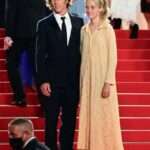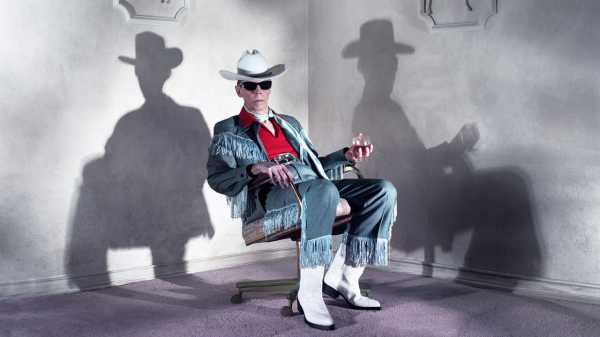
Save this storySave this storySave this storySave this story
The new pictures by Jeff Bark beg to be psychoanalyzed. The sixty-one-year-old photographer spent decades shuffling between making commercial images and more gallery-specific fare, honing a style of louche, opulent staged tableaux that we might call “dark rococo.” The work was sexy and decadent but largely impersonal. His most recent project, “Drunk Dad,” by contrast, marks a move toward something like autobiographical folklore. One day this winter, at his home and studio in upstate New York, Bark told me, “As I’ve been showing it, even my best friends have been, like, ‘Did something happen to you as a kid?’ ”
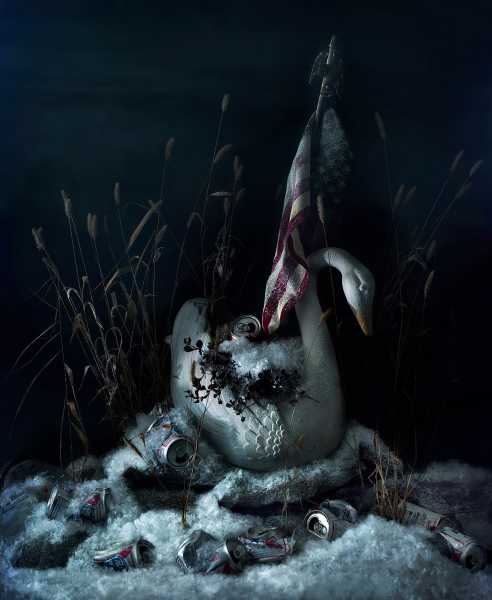

You can see where they’re coming from. The pictures in “Drunk Dad” are almost universally baleful and brooding, emanating the creeping stink of death or a discomfiting sense of the run-down rural uncanny right out of David Lynch’s “Twin Peaks.” There are rotting, weedy still lifes that recall the paintings of seventeenth-century Dutch masters; chilly nowheresville landscapes of forgotten, blighted towns; and creepy allegorical portraits of a waxen-faced male model dressed in, for example, a pilgrim hat, with his pants around his ankles, or as an ersatz cowboy whose fancy-fringed suit suggests that he might be the owner of a used-car lot or a low-rent casino. The series also features plenty of on-the-nose metaphors for sundered American dreams: a white clapboard house consumed by fire; a monumental discarded cross in a thicket of saplings; an American flag stuck in a plastic-swan planter, ringed with fresh snow and crumpled cans of Pabst Blue Ribbon. His picture of an eerily lifeless, glassy-eyed eagle, framed triumphantly as if it were meant to adorn a postage stamp, provides a bathetic testament to our zombified ideals. When Bark was young, he said, he loved Norman Rockwell’s kitschy Americana visions. Now one of his favorite artists is Paul McCarthy, a scatological conjuror of the national id.
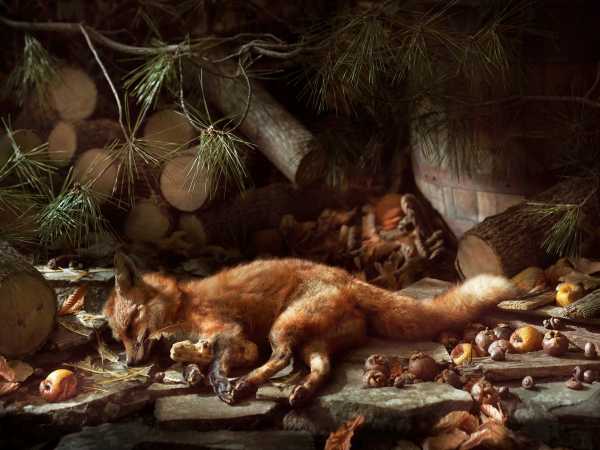

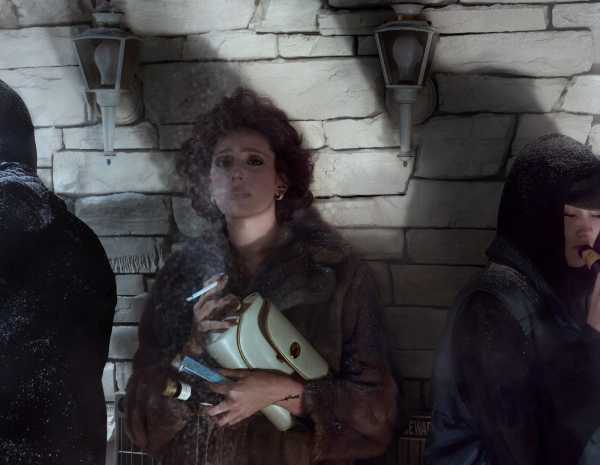
Some of these photos were shot on location in a collection of northern Minnesota towns near where Bark grew up, but most were meticulously crafted in the modest garage studio that Bark keeps on the New York property he shares with his wife and two children. (For most of the photos Bark casts models, though one features his adolescent son, his head covered with a pillowcase and his skin painted, chameleonlike, to mimic the fabric of the chair he is seated in.)
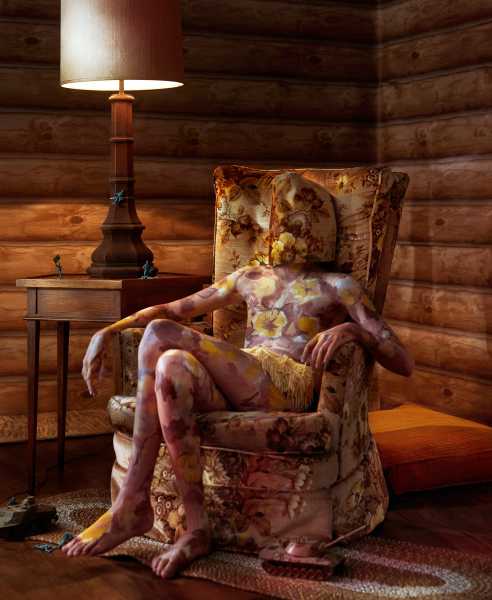

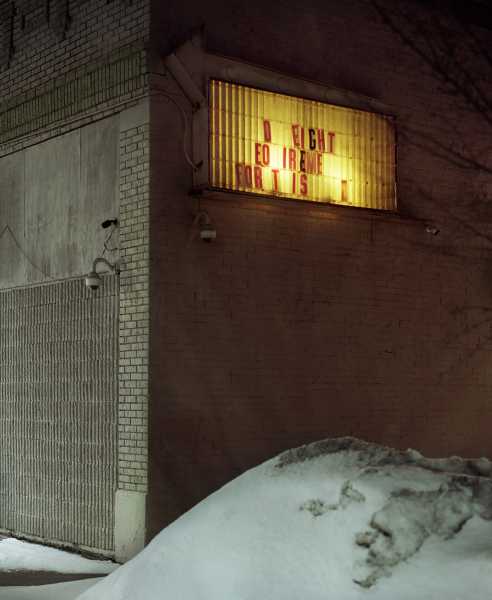
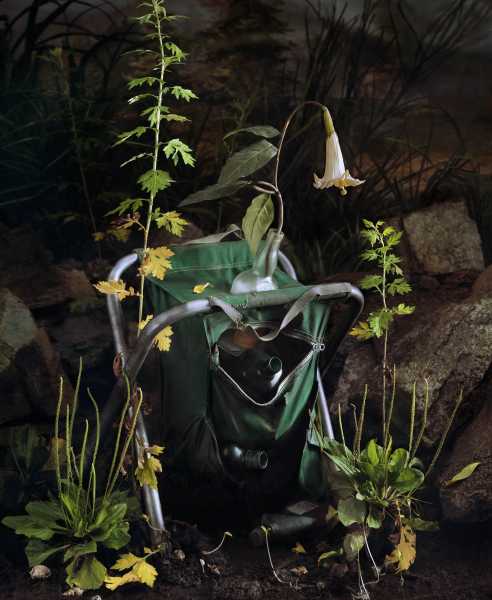
In Bark’s youth, he told me, “I wanted to be a zoo designer or an Imagineer at Disneyland.” He would construct sets in his bedroom inspired by pictures in his mother’s fashion magazines. His sister served, begrudgingly, as his first model. Bark’s set-building wizardry puts him in conversation with artists such as Jeff Wall or Gregory Crewdson, whose early work shares certain tropes with Bark’s still lifes, among them dead or taxidermied animals. One can likewise detect the influence of Alec Soth, a fellow-Minnesotan bard of Middle American dislocation, and perhaps of Roe Ethridge, who creates faux-commercial photos in an aggressively cheery vein. Yet the result, in “Drunk Dad,” is a somewhat unexpected aesthetic mélange, and the pictures, which are divided into three sections (titled The Journal I Did Not Keep, The Long Walk Home, and The Last Hurrah), occasionally seem as if they were made by three slightly different photographers. Nevertheless, the mixture ultimately hangs together, if loosely, with each element sounding a different note in Bark’s elaborately composed dirge.
“Drunk Dad” taps into the currents of sex and violence that run unceasingly beneath American life. A number of homoerotic pictures of svelte, young nude men have a vaguely predatory air. Elsewhere, masculinity appears as a self-contradictory and sometimes ominous trait, as in a photo of a stern-faced figure tightening his tie who appears as if he is about to show someone who’s boss, or a comically abject man stripped down to his dark socks and shiny brown dress shoes, who is attempting to hoist himself up feetfirst by a rope. Bark was reticent and somewhat evasive about what he sees in his male subjects. I asked about one striking scene evoking the mid-century Surrealism of Paul Outerbridge, featuring an alabaster-skinned model bending over a hideous floral couch, surrounded by Shiner Bock empties.
“This kid had, like, a crazy body, and he’s so white,” Bark recalled, but added, “the couch, to me, is what the picture is about.”
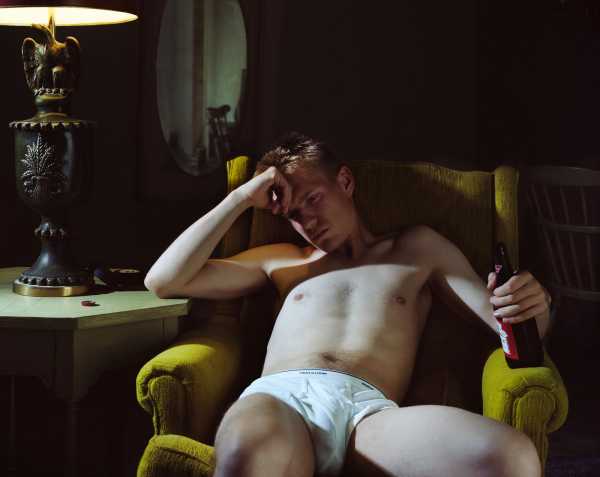
Bark recalls that the men he grew up around were “super-masculine guys”—loggers, long-haul truckers. “You know, like, really fucking good-looking buff dudes who are really tough,” he said. In a text that Bark wrote to accompany the pictures, he notes that these men also tended to prove their masculinity by drinking. “As a kid, it seemed as if you were always opening a beer for somebody until the day you opened one for yourself.” He told me that when his friends have asked him whether “Drunk Dad” is a way of wrestling with some past trauma, he always tells them “no.” But I asked him if, per the title of his series, his late father indeed had a drinking problem, and Bark confirmed that he did.
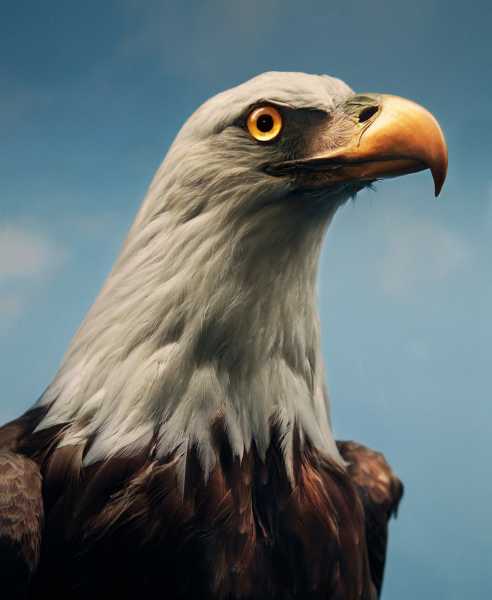
“We’d go camping, and my dad would disappear, so my mom would have to kind of go look for him at different bars and stuff like that,” he said. When his parents later divorced, Bark recalls, he went to an apartment where his dad was living at the time and confronted him about a rumor that he had been circulating at a high-school party he’d attended the night before. Bark remembers yelling angrily at him. Later the same day, Bark told me, his father drowned, probably after drinking.

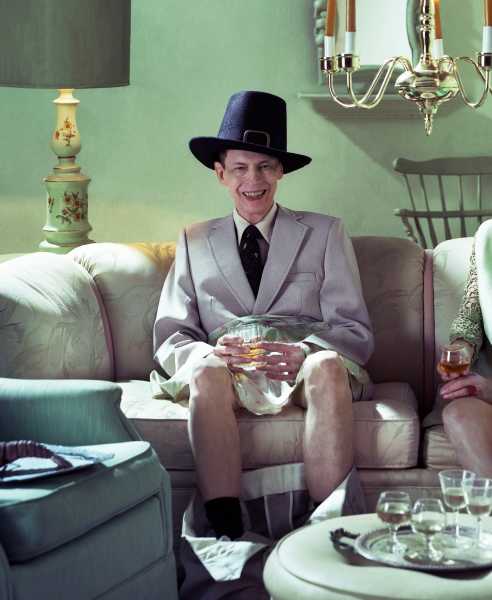
I said to him that this certainly seemed to qualify as a trauma, and Bark tentatively agreed. “I thought I was immune from it all,” he said. “Now I can see I didn’t deal with it, you know? And, through these pictures, I kind of am.”
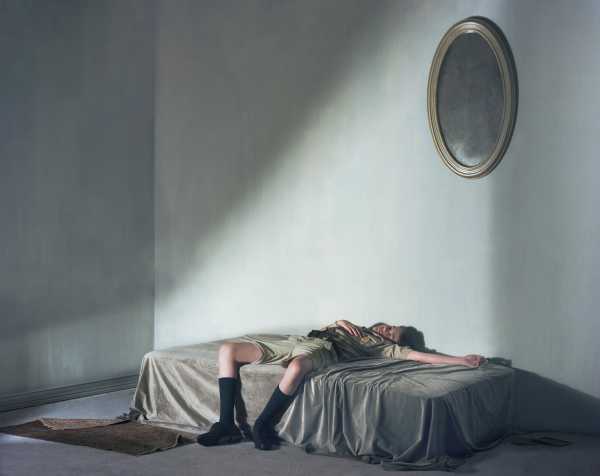
Sourse: newyorker.com





